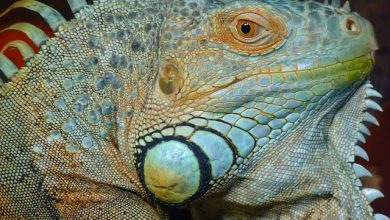What to Do About Gnats and Fruit Flies in Your Bioactive Terrarium

Creating a bioactive terrarium is about incorporating multiple forms of life in your animalâs habitat. Typically, that means having an enclosure where a reptile or amphibian, live plants, and microfauna live together.
Sometimes, however, you get unanticipated life forms in your tank. One of the most common uninvited âguestsâ is insects, such as fruit flies and gnats, that were not added as part of the intended microfauna.
Small insects like these can get out of control in your exotic petâs bioactive terrarium, and they do not usually add to the aesthetic youâre going for. Additionally, they donât provide much benefit as far as tank cleanup goes.
Letâs take a look at how these insects get into your enclosure and what you can do about it.
How do pests get in my terrarium?
Unfortunately, the environment in a bioactive terrarium is often attractive to other species besides just the ones you are trying to cultivate and keep. They may come into your house from a window or door, or they may hitchhike on various items you put in the terrarium.
Some ways that pests end up in a reptile or amphibian setup include catching a ride in substrate, on plants, or with the leaf litter you bring in from outside.
Gnats are attracted to stagnant water and moist surfaces, which can cause them to collect in your tank near water dishes or places that water pools when you water plants or spray the enclosure to increase humidity.
Getting rid of gnats and fruit flies
Because gnats and fruit flies thrive in moist environments, one of the first steps to getting rid of them is to reduce misting until the vivarium is mostly dry. Youâll also find that your tank custodians will tend to outcompete these pest insects over time, so once your custodians establish themselves, theyâll help to create balance in the enclosure.
In the meantime (or if your custodians are well established but you still have a pest problem), you can set vinegar traps.
Fill a cup three-fourths of the way with apple cider vinegar, add several drops of dish soap and stir it enough to form bubbles on the top, then cover the cup with plastic wrap held in place with a rubber band. Poke small holes in the plastic wrap, and put the trap in the terrarium.
Gnats and fruit flies will be attracted to the apple cider vinegar and get trapped in the cup and drown. Continue to keep moisture levels down and the trap in the vivarium for two weeks following the last sighting of these insects to make sure you get all the newly hatched ones and prevent new eggs from being laid.
You can also keep substrate levels to a minimum and turn over the substrate to encourage eggs to dry out rather than hatching. Completely replacing the substrate can also remove the eggs.
Do not use insecticides to get rid of gnats and flies. These products will kill your cleanup crew.
You can place sticky traps around the enclosure to help keep down the pest population in other areas of your house. Just make sure your pet cannot reach them.
Prevention
The best way to prevent these pests from getting into your tank in the first place is to start by always fully rinsing off plants down to the bare root before putting them in a bioactive enclosure. The larvae of certain types of gnats can lie dormant in soil left on roots and then hatch as a surprise once your terrarium is established.
Youâll also want to be cautious about where you get substrate and what you put in the tank. That being said, going bioactive always involves the risk of attracting a few pests.
Another preventive measure to keep in mind is that these flying insects tend to feed on other decaying insects or decaying produce. Remove any uneaten food that is left in the tank.



